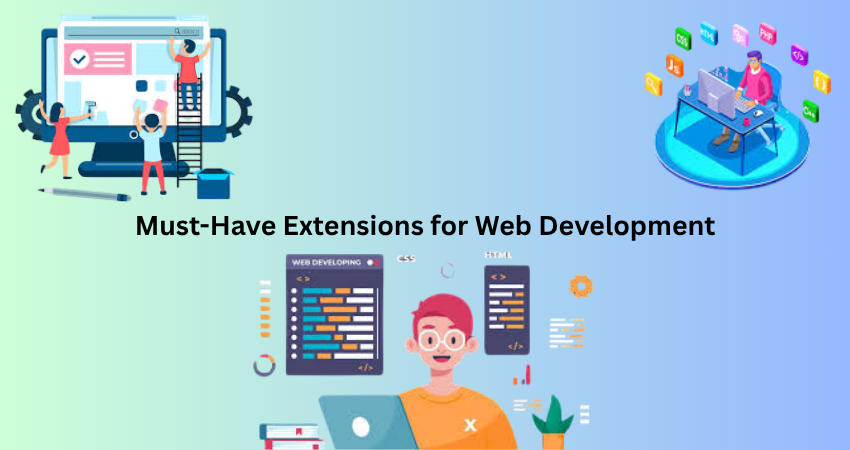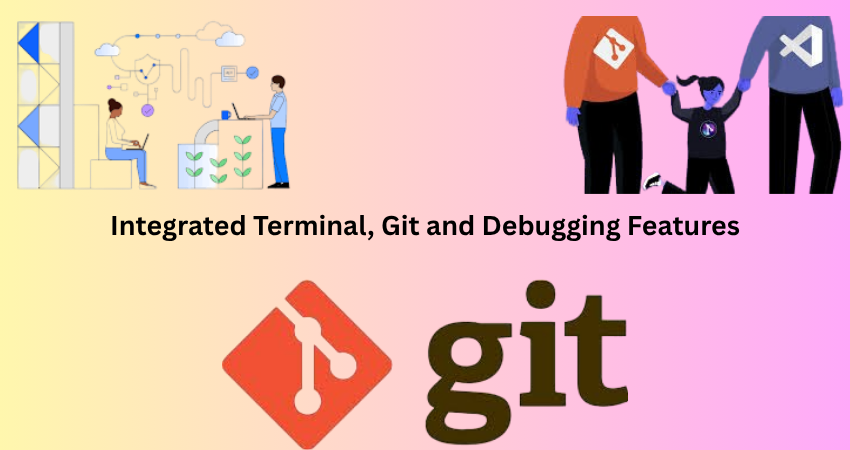
Introduction
Visual Studio Code (VS Code) has taken off as one of the most popular code editors for web development. Lightweight, flexible, and feature-rich, it caters to numerous programming languages, extensions, and workflows, which help web developers do their job with maximum productivity and efficiency. In contrast to traditional IDEs that are heavy and give you a steep learning curve, VS Code manages to offer a sleek interface that gives just enough room for customization to suit the needs of both a beginner and an advanced programmer.
In web development, setting up the environment is as important as writing clean code. A well-tuned code editor can save you tons of hours with debugging, imposing a degree of consistency, and speed up development. Web development in VS Code is powered from the ground up for streaming through all phases: syntax highlighting, auto-completion, linting, version control, and live previews. The guide in this article will take you through setting up Visual Studio Code for web development and gives you a breakdown of best practices, extensions, and configurations that can chandelier your productivity.
Installing Visual Studio Code and Key Dependencies
Downloading and Installing VS Code on Your Machine
Before commencing the configuration, Visual Studio Code has to be installed as the first step. It can be downloaded free of cost from the official website at (https://code.visualstudio.com/). It is also supported on all major platforms like Windows, Mac, and Linux. Installing it is a straightforward process: download, run the installer, and follow the instructions on the screen. Once installed, run the application to see an empty workspace with an explorer sidebar, activity bar, and editor window. Out-of-the-box, VS Code provides basic functions such as syntax coloring, a built-in terminal, and support for Git.
Leicester makes VS Code all that it is capable of becoming in terms of actual development; for instance, for web development, Node.js and npm (Node Package Manager) need to be installed as many JS ecosystem tools can’t work without them-and this can be done through the website Node.js. Having those installed allows you to use common frontend build tools like Webpack, Parcel and Vite directly from the integrated terminal. Now you have everything you need to start customizing your editor in order to consolidate development workflow for speed and accuracy.
Setting Up a Development Folder Structure
Another part which people usually miss out on is organizing the folder structure for projects in VS Code. Like instead of scattering HTML, CSS, JavaScript files into one directory, link them to folders like /src and /assets and /styles and /scripts. The reason for this is for tidiness and easy navigation within VS Code. You can use File< Open Folder. This way, VS Code treats such a directory as your project workspace. This means IntelliSense, Git, or extension behavior will take place around that directory.
Another valuable tip is to create a .vscode directory within your project folder. Being a hidden folder, this is a place where project-specific configurations can be stored: extensions recommended to use for the project, launch settings for debugging, or settings overrides. For instance, one can define formatting settings or ESLint rules that apply only within that specific project. This gives a consistent-looking workspace that’s sharable to other members interested in working on the project, making it great for collaboration and onboarding. By beginning with a clean and organized awesome work environment, you are paving the way for faster iterations and fewer mistakes later.
Must-Have Extensions for Web Development

Enhancing Productivity with Popular Extensions
One of the strongest features of VS Code is its extensibility. Through the VS Code Marketplace, you have access to thousands of extensions that can be installed in just a few clicks. There are several must-have perks for any web developer for maximum coding efficiency, one of which is Live Server; it opens a local development server with live reload. This is especially useful when working with HTML and CSS, as you do not have to manually refresh the page in the browser when changes are made.
Another important extension is Prettier, which enforces a single writing style for all your codes. Prettier solves trivial arguments that you may have about the style and leaves your code looking clean and professional. Added to ESLint which checks your code for bugs or style errors, you have an extremely formidable package in favor of the best practices. Path Intellisense is also very recommended-it autocompletes file paths being typed and reduces possible chances of linking to a wrong file. Extensions like Bracket Pair Colorizer or Color Highlight can also enhance code readability, especially when you are focusing on a complex CSS or a very deeply nested code.
Specialized Tools for HTML, CSS, and JavaScript
Alongside general-purpose productivity extensions, there are language-specific tools that improve development experience. For HTML and CSS, there are extensions like HTML Snippets and CSS Class Name IntelliSense that help to speed up the workflow from autocompletion of common tags and classes. Other than these, Emmet comes installed by default in VS Code and helps you write short codes for HTML and CSS. For instance, typing ul>li*5 and pressing Tab will create a list with five items, just right for a quick prototype.
JavaScript (ES6) code snippets pave the way of very much useful shortcuts pretty much for every import and export of arrow functions. Moreover, if you are working with React or Vue frameworks, you have their own exclusive extensions such as React Developer Tools and Vetur, which will really give you context-aware, syntax support as well as linting and snippets. In the case of TypeScript, TypeScript Hero is a great way of handling import and better navigation features. They are not only really useful for increasing speed but also ensure cleanliness in coding and an error-free code by catching mistakes early and making intelligent suggestions. With the above extensions to your workflow, VS Code will transform from a simple editor to a powerful web development environment.
Optimizing Settings and Workspace Configurations
Customizing VS Code Settings for a Smoother Experience
Visual Studio Code is a very flexible open-source code editor, and so as to get an improved development experience, you can set up its preferences. You can found the way to these settings via the path File > Preferences > Settings (or by Ctrl + ,). This is where you can look for particular preferences or go to edit configurations inside settings.json directly. Important settings include formatting on save where Prettier or your favorite formatter gets executed through the saving of a file automatically. So with this utility, it keeps the code formatted but needs a minimal number of manual formatting activities.
You can also customize as per your font size, your tab spacing, and your theme. VS Code is providing you light and dark themes as well as you can hear from the most common “dracula official” or ‘Material Theme’ or “One Dark Pro” which can offer you a pleasing interface. Then, perhaps another good trick is setting up files.exclude and search.exclude settings to hide the files you are not interested in-for instance, node_modules-from the file explorer and search results. This reduces clutter and allows your focus to be on the files that matter. Also, word wrap, and autosave, plus minimap can improve visibility and reduce friction while working on massive files or projects.
Managing Multiple Workspaces and Project Environments
For a developer working for different clients and with varied projects, the effective management of workspaces is key. VS Code permits the usage of Multi-root Workspaces wherein multiple folders of projects can be opened in the same editor’s window. Workspaces can be saved as .code-workspace files to allow for later loading, quickly switching context without reconfiguring settings or reopening files each time. Each workspace can have its own extensions, settings, and debugging configurations for more control over the environment.
Custom launch configurations for any workflow you may want to define to build or debug your project will be defined within each workspace. All of these are set up within a launch.json file in the .vscode folder, and jobs like starting a server, compiling SCSS, running tests, and others can be defined. You can define even more task runners within tasks.json to automate running frequent commands like npm run build or git pull. All these provide a more scalable and organized workflow especially when working with various technologies, languages, or deployment environments. Hence workspace management maximizes productivity while minimizing the scope for errors or misconfigurations.
Integrated Terminal, Git and Debugging Features

Leveraging the Built-in Terminal for Development Tasks
The focus has been laid on integrated terminal present in Visual Studio Code which allows users to execute shell commands within the confines of the editor itself, thereby preventing unnecessary shift from one’s editor to an external terminal and saving time for better concentration. Terminal can be launched with Ctrl + ` and more than one tab can be opened for executing a simultaneously running command. All activities surrounding your workflow-from starting the development server, installing npm packages, or even use version control-all happen within the terminal to make your work central and efficient.
For web developers, that feature is crucial. You can run scripts like ‘npm run dev’ to start your frontend project; execute git commands for version control; or run sass tools for real-time impression of the stylesheets. Terminal supports multiple shells, i.e., Bash, PowerShell, Command Prompt, or Zsh, depending upon the user preference and OS in use. Default shell can be configured in your settings file. The incorporation of the terminal in VS Code creates a more integrated development environment, aiding the troubleshooting of issues by having all logs and output visible to the coding environment.
Using Git Integration and Debugging Tools
Another feature that stands out in Vs Code is the integration with Git. It allows source control from the source control panel itself, where you can stage, commit, and push code changes, all from within the editor. Branches can also be managed, diffs can be viewed, and merge conflict resolution with visual aids can be done. This surely demystifies Git for the novice while increasing the efficiency of the pro. The timeline view, inline annotations, and built-in GitLens extension are yet another productivity add-on to your version control workflow.
Another area in which VS Code excels is debugging. Using the built-in debugger, breakpoints can be set, variables can be inspected, and code can be stepped through. Whether debugging a front-end application in the browser or a Node.js server, VS Code offers a fluid and powerful experience. By configuring a launch.json file, you can nail down precisely how your application should be run and debugged. This minimizes the need for console logs while expediting the detection of complex bugs. With these sets of tools integrated directly within the editor, VS Code offers a complete environment for writing, testing, and refining code all in one place.
Conclusion
Setting up Visual Studio Code for web development means more than just installing an editor-it is about setting up a wonderful super custom environment that allows your working process and empowers you to make some great websites and applications. Extensions must be installed and workspace configurations fine-tuned, but VS Code is designed to address everything a modern web developer needs while providing a working platform with built-in tools: terminal, Git integration, and debugger. When set properly, VS Code is your great companion on the road of development.
Wherever simple HTML/CSS meet the doors of complications in different JavaScript frameworks, you really may find yourself having yet another level of customization in VS Code fitting your own needs. The modular approach, vibrant community, and rich extension ecosystem make VS Code a natural selection for the developer community across the globe. Any time you spend customizing VS Code pays for itself in improved productivity, better output, and much less stressful coding experience. Start with simple things, try out different combinations, and watch productivity rise.